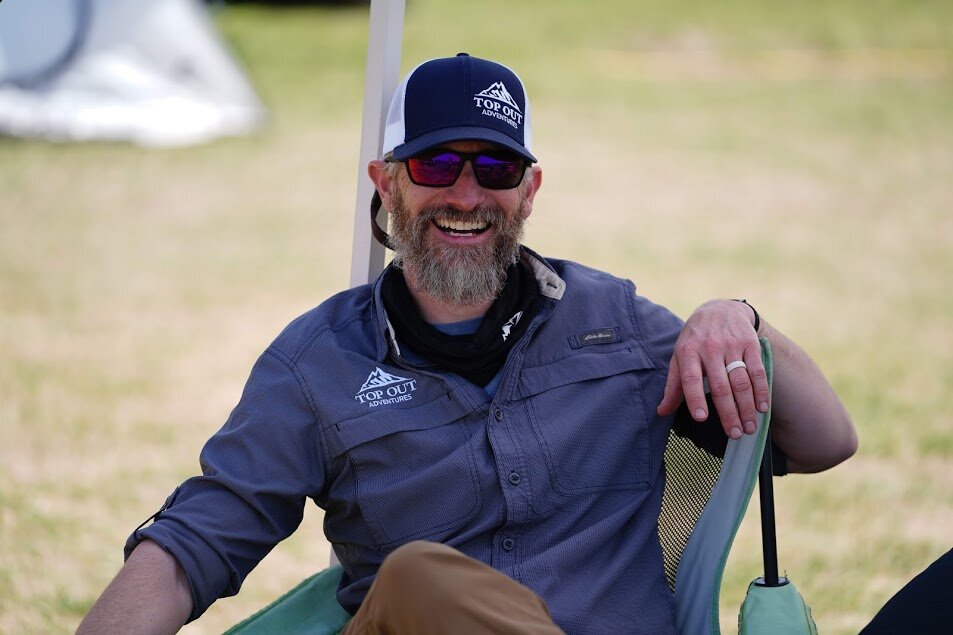A Road Runners Guide to Trail Running, Part 2
“Which way did he go? Which way did he go?” -Elmer Fudd
We are going to continue our series of the road runners guide to trail running and talk about navigation. One of the best parts of trail running is the sense that you are out away from the standard roads and marked paths that we often find as road runners. However, this also means that we have to pay more attention to where we are and where we are going or we risk getting lost. While some of my best adventures have come when I got lost, so have some of my most frustrating and exhausting days.
On the Training Run:
So you’ve heard that the trails at the park just outside of town are great, and you get up early on a Saturday morning to check them out. You load the park in the GPS on your phone and drive out there. Now what? Where do I start? How do I get on the trails? How far do I have to run to get back to my car? How much food and water should I take?
All of these questions can be answered before you head out thanks to the good ole internet. Almost every park has a website with a trail map that you can download as a picture on your phone. You can also go to the Alltrails app and probably download the actual trail route on the app on your phone. You can then use the GPS on your phone to track where you are on the route. You can also get comments and reviews on the best access points to the trails and where you can get water.
If you are not able to do that kind of prep work, find the kiosk at the trailhead. It will have a map on it with a “You are here” marker. Take a picture of it. Open the compass app on your phone and figure out which way is north and compare it to the north indication on the map. With that basic information you should be able to know which direction you are going on the trail and find your way back to where you started.
Regardless of how lost you feel, I do not recommend that you leave the trail. In the majority of parks with any trail system, the road traffic is infrequent. You are more likely to pass somebody on the trails before the road, and the person on the trail will probably have more knowledge about where you are than the person driving down the road. The time that I would deviate from this guidance is when there is a real emergency, and I pass a road where I can see traffic flowing. In that case, I would flag someone down to get help.
I want to point out that in all of these cases, you need to carry your phone with you. There are few places these days where you can’t get a cell signal, and there isn’t a convenience store on the corner of the trail to borrow a phone. With a phone you can call for help and use it to navigate. Don’t leave your car without it.
On the Race Course
So you’ve taken the plunge and are going to tackle a trail race. Congratulations! You’re going to discover a new world of running, but there are some things you should know about trail courses that are significantly different from road courses.
To start, you are going to be following signs staked in the ground and caution tape rather than road signs and painted arrows on the concrete. These indicators are often at tight turns that you won’t see until you are suddenly at the intersection of two trails. The good news is that trail course markings are generally consistent in methodology, and it can become second nature like following road signs. To keep this blog post from getting way too long, I am going to give a brief explanation of the most common type of markings you will see.
Caution Tape:
This is typically brightly colored plastic tape or pennant flagging that is strung along the course to indicate where not to go. This is pretty simple to follow. DO NOT cross the tape. Sometimes the tape will be strung from tree to tree at waist height, but on trails that are not 100% closed down for the race, it may be on the ground. Either way, treat it like there is lava on the other side, and don’t cross it. This tape will not be strung along the entire course for the sake of not wasting it, but it will be at trail intersections telling you where not to go.
Marker Signs:
Marker signs are communication tools that tell you where to go and tell you when you have gone the wrong way. They are often arrows and sometimes have an indication of which course they are marking by distance (e.g. 10K, marathon, ultra). Don’t over think these signs. The course marking team has put them in locations and pointing in directions based on where you are when you see them. If you come around a corner and the arrow is pointing straight up (meaning straight ahead) then keep going. If it is an arrow that is pointing horizontally to the right, you need to look to the right and take the trail you see.
Once you pass a sign, forget about it because the other side is not intended for you. The other side of the sign will probably have something like “Wrong Way” or an arrow that is intended for when you come back that way from the other direction.
Confidence markers:
Once you have gotten past an intersection and are cruising down a clear trail, you will see what are called confidence markers hanging from tree limbs on the edge of the trail. Typically they are about 10” strips of brightly colored tape and may have a reflective piece on them also. These are there to encourage you that you are on the right trail. Course marking teams will typically put a confidence marker in line of sight above a marker sign and farther down the trail. So you made the turn and there’s the confidence marker. All good to go. Time to relax and get back in the flow
As with the training run, do not leave the trail, but in the case of a race, it is even more important to stay on the trail. There is going to be somebody minutes behind you. If a search and rescue is initiated for you, the search is going to be on the trails. Getting off the trails exponentially increases the search area and decreases the speed with which you will be found.
Don’t let this navigation thing scare you away from the trails. Once you have a small amount of experience, you will find that it is not as difficult to navigate as you might think. Remember when you moved to a new town, how hard it was to get your bearings. Once you have get the hang of trail navigation, it will be like you have been living on the trails for years.
About the Author:
Dave Smithey is the owner and a guide for Top Out Adventures. His passion for the outdoors and people comes from his experiences as an ultra runner and mountaineer. You can contact him at DaveS@TopOutAdventures.com.
Photo Credit: Andrew Holmes. Check out Andrew’s work at www.aholmesphoto.net or Instagram @aholmesphoto



